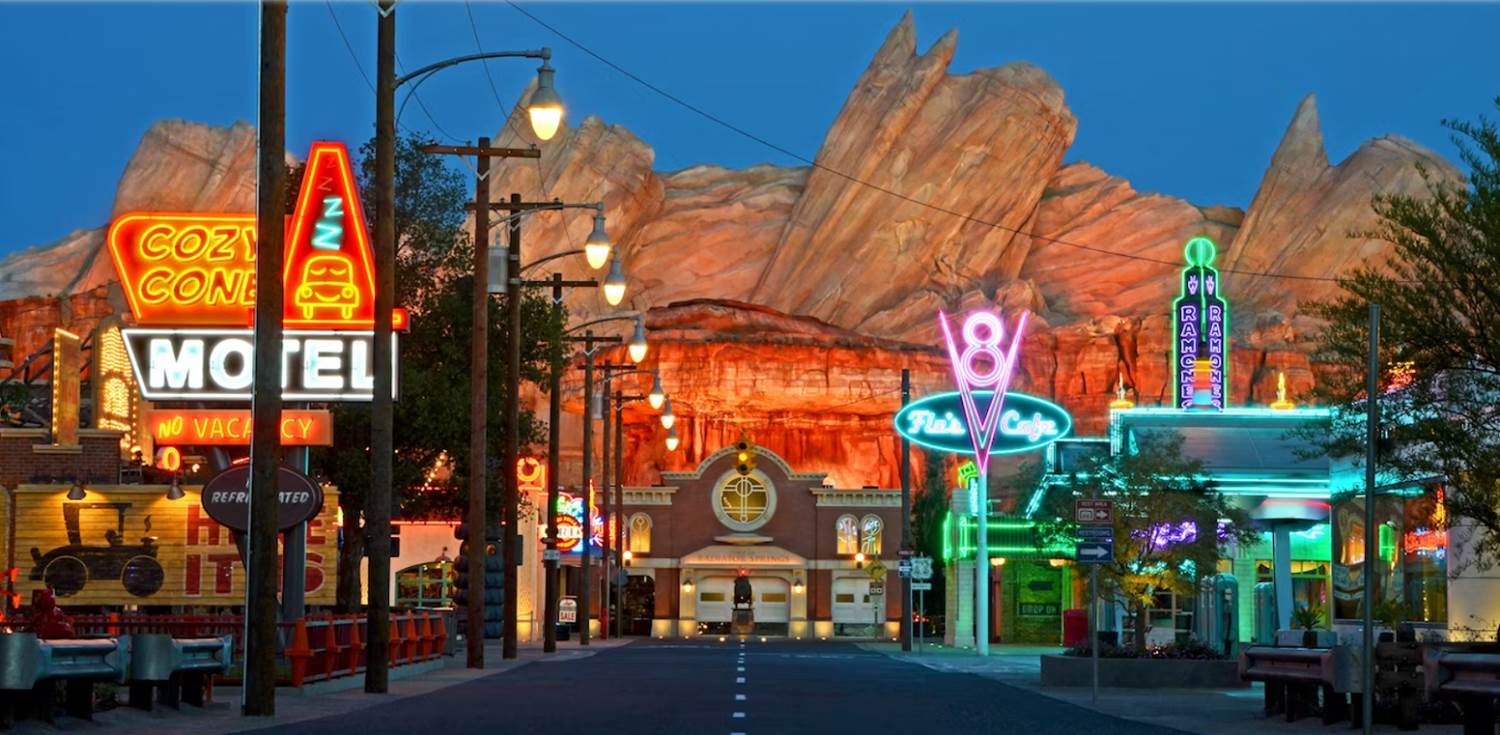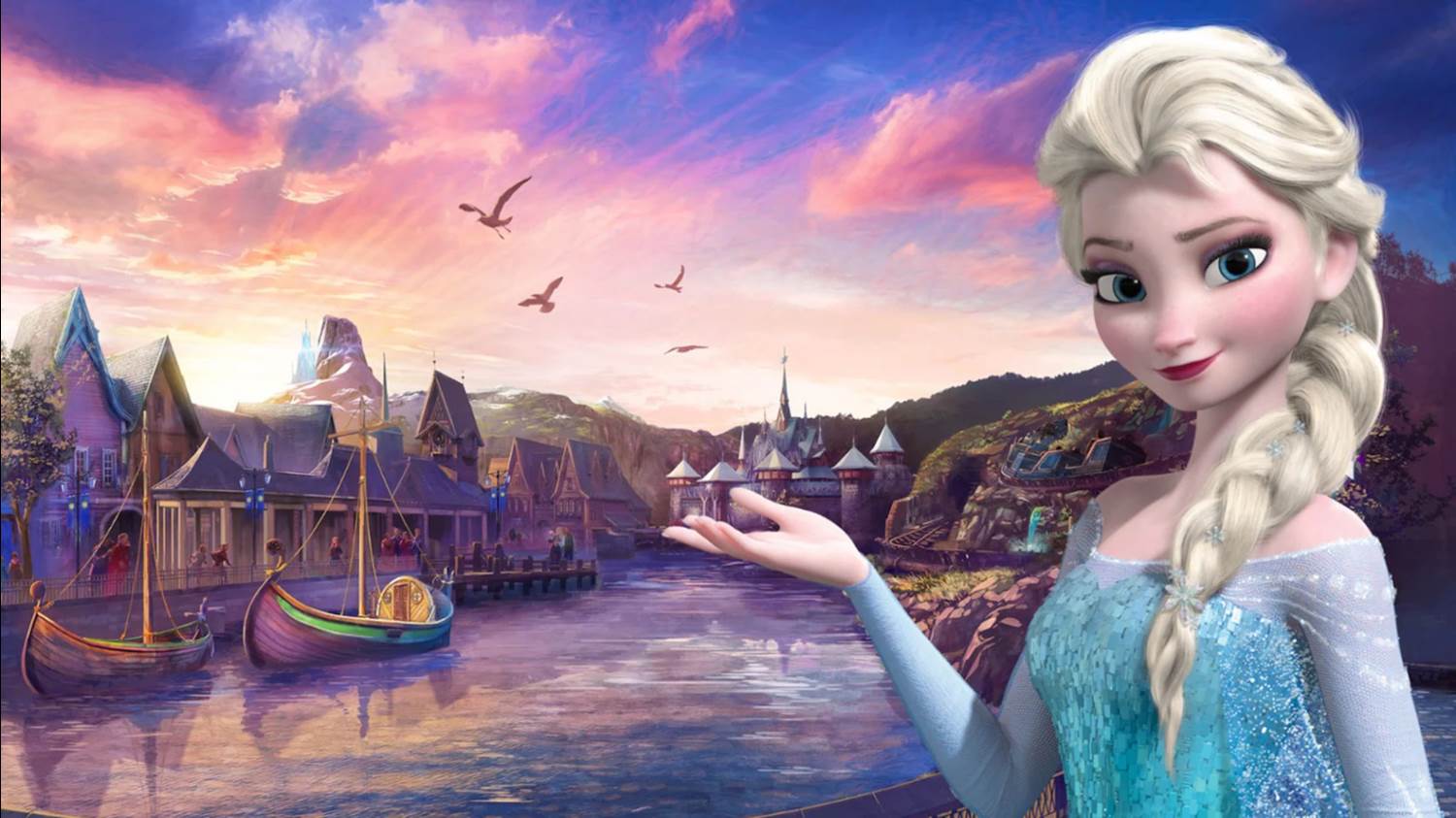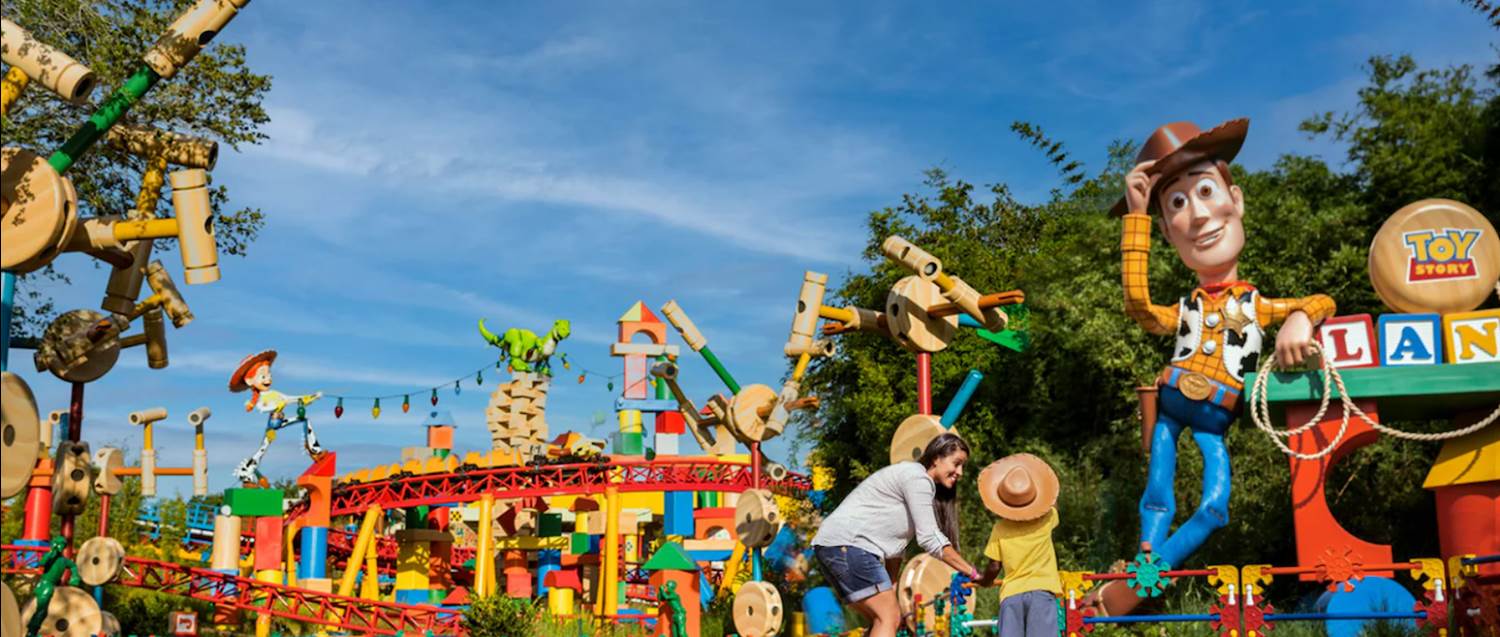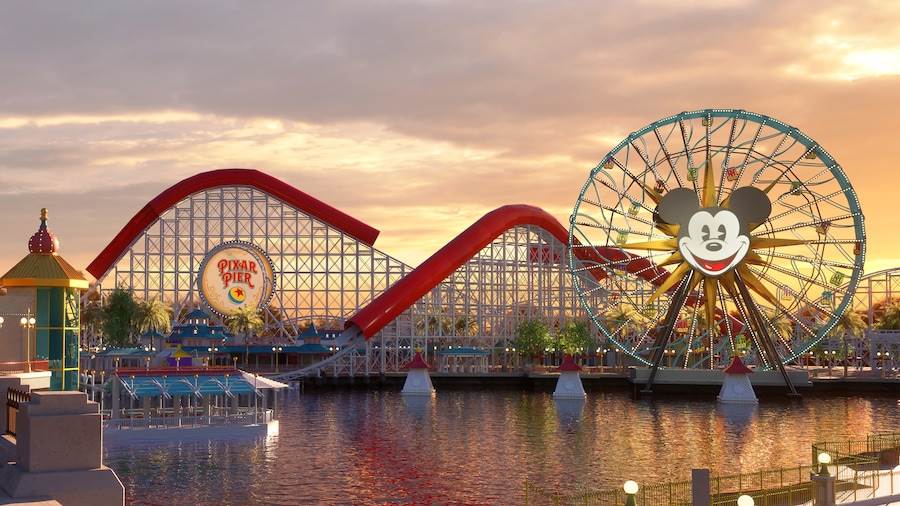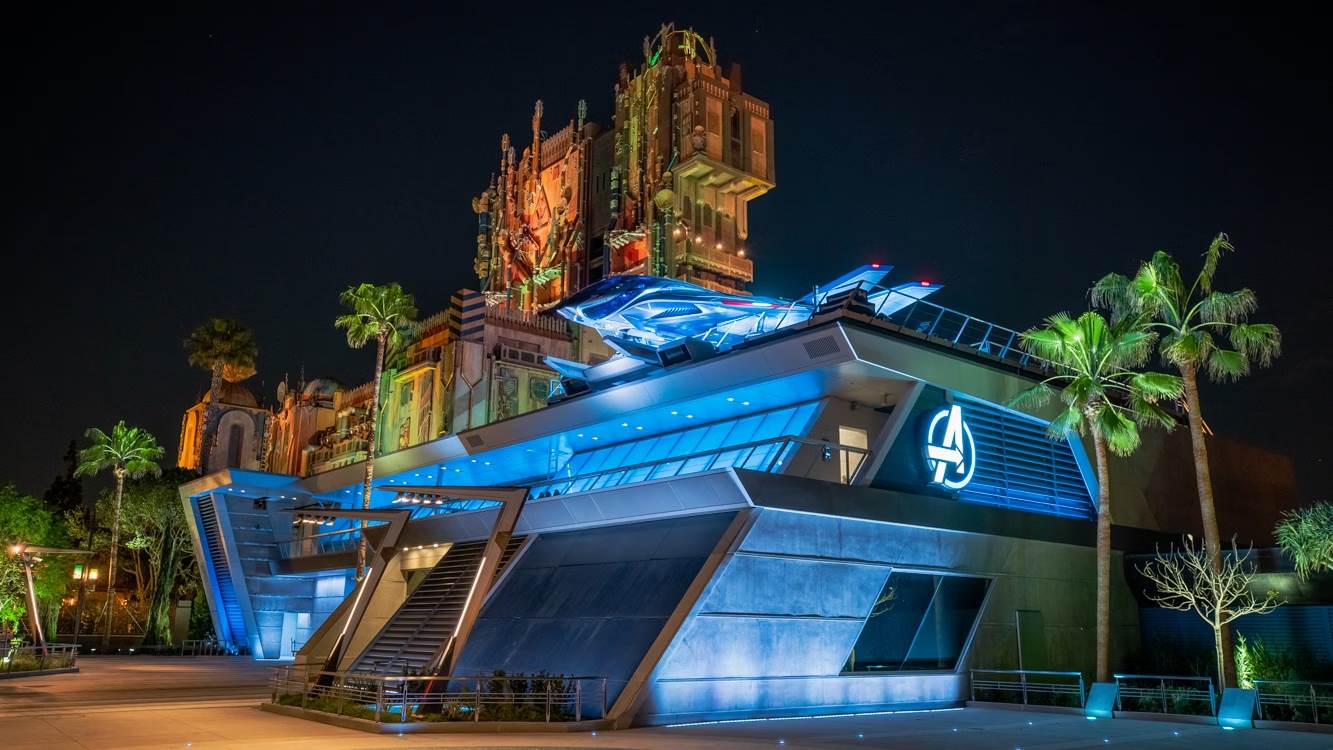The Successes and Failures of Disney’s IP-Themed Lands
D23: The Ultimate Disney Fan Event introduced us to an exciting array of announcements for the Disney Parks. With thrilling and detailed new additions coming to all 6 of Disney’s theme park destinations, Disney fans will have a lot to look forward to over the next decade. In the current trend, several of the new announcements involved areas themed to a singular intellectual property (IP). While IPs have always been a staple of the Disney Parks, most of these attractions were incorporated into existing lands.
On a fateful day in 2010, Universal Orlando Resort debuted The Wizarding World of Harry Potter. In the peak of the series’ popularity, fans of the books and films were able to step into the magical streets of Hogsmeade and the iconic halls of Hogwarts School of Witchcraft and Wizardry. The Orlando-based resort had struck gold. Not only had the resort created a unique, immersive, and thrilling new theme park experience, they had officially stepped out of Walt Disney World’s shadow.
Since the success of Universal’s new found magic, the company has made The Wizarding World of Harry Potter a staple at almost every single one of their theme park resorts. They’ve also stepped into other single-IP themed successes such as Super Nintendo World. Disney, on the other hand, began taking notes from Universal’s playbook. Utilizing some of their highest grossing and most popular brands, the media company has added several new single IP based lands throughout their resorts. While many of these have been successful additions, others have been criticized for lacking substance. The Wizarding World of Harry Potter was kind of a perfect storm. Not only was the series a highly personal story for many fans, but the world of the series has locations that are just as, if not more, important than the main characters. Let’s take a deep dive into Disney’s most recent IP-based lands and discuss their successes and failures.
Cars Land
When Pixar’s Cars premiered in 2006, families were fascinated and enthralled by the alternate universe of the film. Announced as a part of Disney California Adventure’s complete overhaul, Cars Land would become the crown jewel of the newly refreshed park. Inviting Disney fans into the small town of Radiator Springs, guests are able to visit the iconic shops and restaurants of the main location of the film. Implementing the iconic neon-lighting ceremony, drive-around characters, and one of Disney’s best attractions, this land provided so much for fans of the film. With impressive and dominating rock-work, this land envelops you into this familiar world. Overall, Disney knocked it out of the park with Cars Land. While the series doesn’t have the brand power of the Harry Potter series, the land unapologetically makes you a part of the film’s world. Whether you’re a Lightning McQueen fan or not, no one can deny this land’s successes.
Pandora: The World of Avatar
Being announced for Disney’s Animal Kingdom in 2011, Pandora: The World of Avatar feels like a direct response to Universal’s success. Taking approximately 6 years from announcement to completion, this land was highly anticipated. Avatar, which has maintained the title of highest grossing movie ever for 15 years, is a unique cultural icon. While fans were apprehensive about the addition, as the film has a generally derivative plot and forgettable characters, the world creation from the film was the blockbusters main selling point. Pandora is gorgeous, other-worldly, colorful, fantastical, and people desperately wanted to go there. The film even sparked a new condition referred to as Post Avatar Depression Syndrome or PADS. While not medically recognized, the phenomenon referred to the intense longing for Pandora’s existence and the subsequent depression that people felt after experiencing the film. Pandora is a perfect choice for an IP-themed land. With gorgeous floating rocks, unique creatures, scents, sounds, and more, Pandora: The World of Avatar embraced the film's true main character. Avatar: Flight of Passage continues to be one of Disney’s most popular and beloved modern attractions, consistently hosting the longest lines in the resort. Allowing fans to experience flight on the back of an Ikran (Banshee), the thrilling motion-based ride provides a strangely emotional atmosphere, making this attraction feel personally impactful. While Na’vi River Journey may be short, the attraction also creatively and effectively invites guests into the unforgettable world of Pandora. Especially in 2017, many people thought Avatar was a dead brand, but Disney proved the world wrong. I even believe that Pandora: The World of Avatar contributed to Avatar: The Way of Water’s success. There is so much heart and love in this land. It might be Disney’s most successful modern expansion.
Star Wars: Galaxy’s Edge
Galaxy’s Edge is an interesting beast. Star Wars undoubtably deserved the Harry Potter treatment. With a vast universe of planets, ships, characters, time-lines, and iconic music, there is so much that fans dream of being a part of. One of the challenges I imagine that Imagineers faced was who, what, where and when they wanted to showcase throughout the land. Culminating in a new planet called Batuu, Star Wars: Galaxy’s Edge takes place in between two of the most controversial Star Wars films with The Last Jedi and The Rise of Skywalker. This is the first failure, in my opinion. With over 40 years of stories and characters, Disney chose to showcase their new sequel trilogy, which lacks the adoration of the original trilogy and nostalgia of the prequel trilogy. While a good tool for advertising the current climate of Star Wars, the land failed to capture the essence of where Star Wars began. Another problem within the land is the coexisting desires to create a new storyline for guests and place them into familiar environments. While the idea of an original story within the universe of the films was an incredibly unique and exciting idea, the cluster of nostalgia bait overwhelms the authenticity of the experience. Incorporating the iconic Cantina and a chance to fly the Millenium Falcon, this derivative, yet unfamiliar, environment lacks a sense of purpose other than to pull together experiences deemed important to provide for guests. While The Wizarding World of Harry Potter is filled with opportunities to spend money, they all feel authentic and important to the immersion of your experience. Galaxy’s Edge, on the other hand, allows guests to spend hundreds of dollars on droids and lightsabers that have zero purpose within the context of their experience. Disney doesn’t allow guests to scrimmage within the land, which makes sense. However, there is no added benefit to having a lightsaber vs the interactivity of having a wand in the Wizarding World. Star Wars also is a very character focused series. The vast environments of the films are ever changing, providing a difficult placemaking challenge. An easy fix for a lot of these problems would be added entertainment, walk around characters, and droids. I think, while Imagineering made an incredibly beautiful, detailed, and exciting environment, they missed the mark on capturing the unique energies of the Star Wars universe.
The World of Frozen
I’m still baffled that a rethemed ride from 1989 became the staple attraction for Disney Animation's highest grossing movie ever. Don’t get me wrong, I think Frozen Ever After is a really fun attraction. Having ridden Anna and Elsa’s Frozen Journey, I actually prefer the storyline of Frozen Ever After to the book report attraction at Tokyo DisneySea. But where Tokyo’s attraction surpasses Frozen Ever After is in scale, animatronic quality, and length. Frozen Ever After is a supporting attraction at EPCOT, but in this new land, it is the headliner. I think Disney did a great job at creating the atmosphere of Arendelle, however, they missed a huge opportunity to celebrate Disney’s two most popular Princesses/Queens. Another strange choice is making Arendelle Castle a prop. Within the context of the movie, the gates of the castle being opened up to the citizens of Arendelle is a huge plot point. With the land existing after the events of Frozen, guests should be able to experience that environment. I do give them props for creating a highly themed family coaster, as Hong Kong Disneyland severely lacked a coaster for smaller children. I also love that they included an interactive entertainment/meet-and-greet experience within the land. But, substance-wise, this land reads more as a mini-land similar to Mystic Point and Grizzly Gulch without a show stopping attraction.
Toy Story Land
I know there are several Toy Story Playlands located in different Disney Parks around the world, but we are gonna focus on Hollywood Studios’ Toy Story Land. Incorporating the only attraction located in Pixar Place into its own experience was a smart decision. The idea of being shrunk down to the size of a toy is whimsical, silly, and unique. I love the story behind Slinky Dog Dash, and I do really think the idea of this land is, in the best way, very early 2000s Disney. Where this land slips is its lack of things to do. While the land has three attractions, there is nothing to do or see beyond that. They recently expanded with a new restaurant, but the land could really benefit from taking inspiration from a past Hollywood Studios offering. The Honey, I Shrunk the Kids playground more successfully created an environment that scaled guests down while also providing a unique experience within the park. Overall, Toy Story Land isn’t bad. It just doesn’t quite meet the high expectations Disney is capable of. Also, the inconsistent scale of the figures within the land and the walk around characters is a huge miss.
Pixar Pier
Where do I begin? I debated on whether to include this on the list because, in some ways, this is a collage of IPs. However, Pixar itself is an IP, so we are keeping it. Pixar Pier is one of Disney’s strangest decisions to date. A recently updated Paradise Pier very successfully captured the classic seaside park vibes found throughout California. In less than 10-years, the nearly perfected version of the land was covered in stickers, characters, and meet-n-greets with nearly no purpose. While the tongue-in-cheek Incredicoaster successfully pokes fun at generic superhero theming found at other amusement parks, it mostly gives in to the lower theming standards of Six Flags’ numerous DC Comics themed attractions. All placemaking feels overshadowed by branding. Other than an opportunity to place these, admittedly, beloved characters into the park, there lacks purpose in this reimagining.
Marvel is a fascinating focal point for a themed land. With so many characters, storylines, villains, and locations, it's hard to pinpoint a successful placemaking space. The idea of a Silicon Valley based tech campus was a really smart choice. While I think it struggles to capture the grandeur of the stories told throughout the MCU, Disney did a great job at finding a way to unite these characters into a single location. However, this leads to my biggest gripe with the experience. Marvel is about its characters, not the world that it exists in. Yes, I think Avengers Campus succeeds greatly in offering superhero fans the opportunity to meet and interact with their favorite characters, but it lacks a sense of identity past that. Without the webs, walk around characters and logos, this land would not feel distinctly Marvel. Opening without a true E-Ticket attraction also hurts the land's ability to really sell itself as an experience. Islands of Adventure at Universal Orlando also has a Marvel themed area with Super Hero Island. While based around the comic books, this land has a unique aesthetic that does hone in on Marvel’s original product. The Amazing Adventures of Spider-Man perfectly immerses guests as a part of the story, while still showcasing the heroes and villains fans know and love. Hopefully, with the two new attractions arriving at Avengers Campus in the next few years, Disney will be able to really sell the vision they had for these iconic characters.
Zootopia
Recently opening in Shanghai Disneyland, Zootopia is another prime example of immersion into the universe of a film. 2016’s Zootopia showcased a unique world where animals of all shapes and sizes co-exist. With colorful buildings, varying scale, and a very unique concept, this mega-popular animated film is a prime candidate for the single IP land treatment. Disney also went above and beyond creating puppets to really bring these animals to life. Additionally, the main attraction, Zootopia: Hot Pursuit, showcases a plethora of Imagineering’s most high-tech ride technology. While Zootopia doesn’t really warrant its own theme park land from a brand perspective, Disney knocked it out of the park in selling the experience as a unique and distinctly Disney experience.
As Disney continues to expand their offerings through their IPs rather than original ideas, I hope they continue to focus on welcoming guests into the amazing worlds that exist within their network of iconic stories rather than branding and cross promotion. Some of these stories really do warrant the hundreds of millions of dollars invested into these projects. In Star Wars’ case, billions. But original stories and incorporating IPs into broader environments can be equally as effective at welcoming guests into the magic of Disney.
Read More:
- Ranked: D23 2024 – Disney Parks and Experiences Announcements Tier List
- Soarin’ to Tower — The “Soarin’ Ear Hat Guy" Recreated His Role For D23’s Horizons: Disney Experiences Showcase
- Review: Horizons – Disney Experiences Showcase Pays Off Past Disney Parks Presentations (While Adding Some Self-Depreciation)
- Video: All Announcements Made During Horizons: Disney Experiences Showcase at D23: The Ultimate Disney Fan Event




